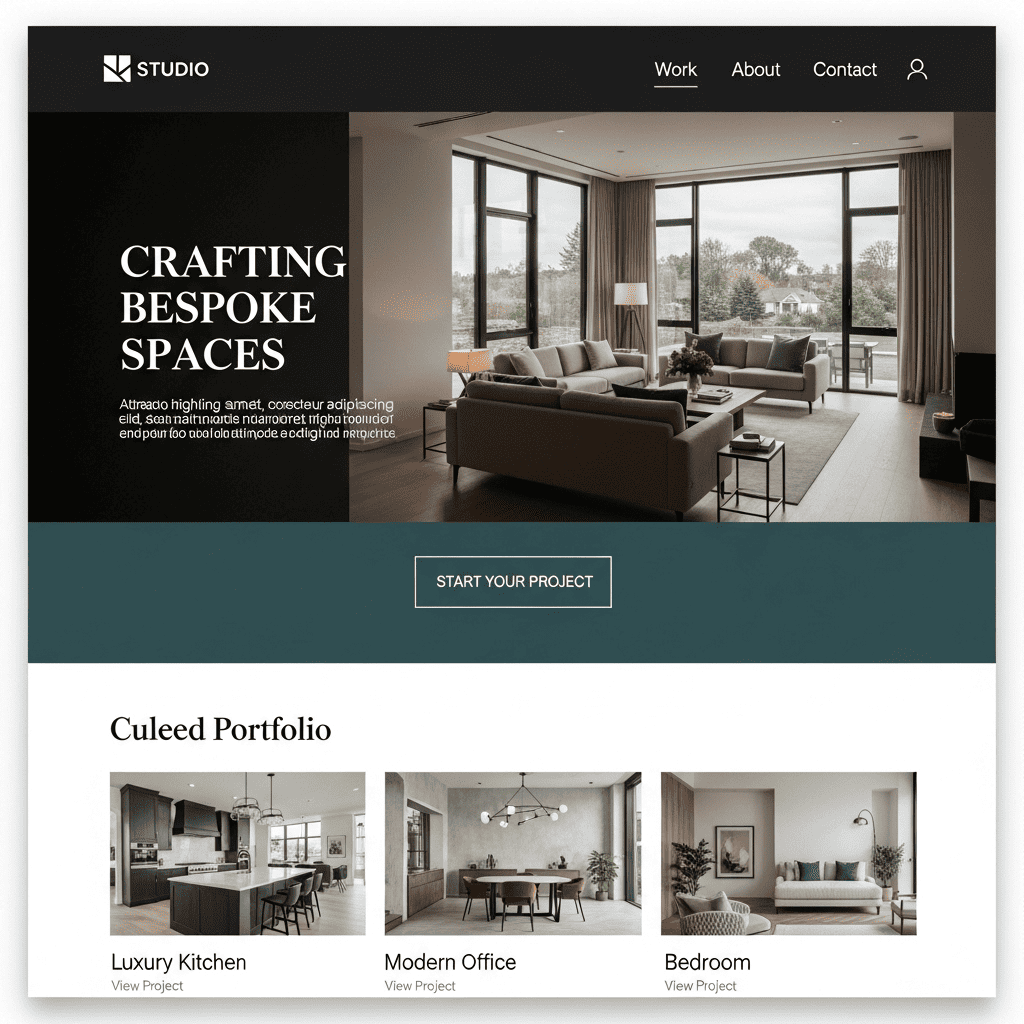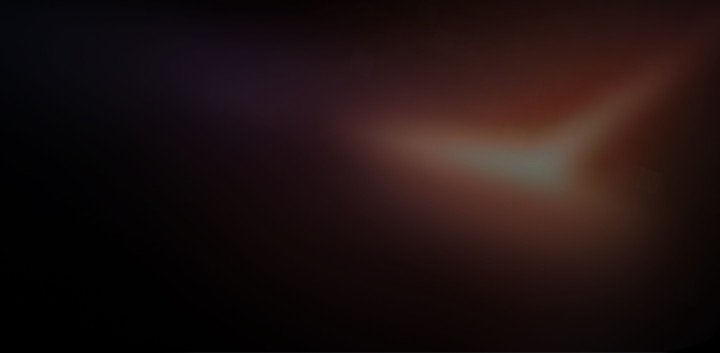How to Optimise Your Studio Website to Attract Better Inquiries
Beautiful Doesn’t Convert. Optimised Does.
Your website isn’t a portfolio. It isn’t a brochure. It isn’t just your brand story.
Your website is a conversion engine.
And if it’s not optimised to attract better inquiries, you’re just entertaining visitors, not converting them.
Here’s the mistake most design studios make: they obsess over pixels. But high-value clients don’t care about pixels—they care about outcomes.
This post will show you how to transform your design studio website into an inquiry-generating machine by:
- Aligning your message with buyer intent
- Engineering trust across every scroll
- Using SEO to attract qualified leads, not just traffic
- Turning visits into booked consultations
Let’s fix your site so it sells your studio—not just shows it off.
Key Takeaways: How to Optimise Your Studio Website for Inquiries
- Your site is a funnel, not a flier — guide visitors from awareness to action.
- Message clarity beats cleverness — say what you do, who you serve, and why it matters.
- SEO is about relevance, not volume — target high-intent, inquiry-driven keywords.
- Case studies double as landing pages — optimise each project for search + conversion.
- CRO drives revenue — small conversion lifts mean thousands in new business.
- Speed + UX = trust — slow or clunky websites kill credibility with premium clients.
- Contact page must pre-sell — it’s not a form, it’s a conversion tool.

Your Website Is a Funnel, Not a Flier
Most studio websites look like glossy coffee table books—expensive lookbooks that impress peers but fail to generate inquiries.
Here’s the problem:
A stunning homepage with no conversion path is just digital decoration.
High-quality inquiries don’t come from hope. They come from structure.
Your Website Needs a Funnel: — think of the site as a layered strategy The 5 Layers Every Architecture SEO Strategy Must Include
- Top of Funnel (TOFU): Capture attention with value-driven content
- Middle of Funnel (MOFU): Build trust with proof (case studies, reviews, process)
- Bottom of Funnel (BOFU): Convert with frictionless CTAs, clear services, and strong value props
Ask yourself:
- Can someone figure out what you do in under 10 seconds?
- Can they contact you without frustration?
- Do they feel like you specialize in solving their problem?
If not, they leave.
Studio Website Funnel Done Right
| Funnel Stage | What Clients Are Doing | What Most Studio Websites Show | What an Optimised Website Should Do |
|---|---|---|---|
| TOFU (Top of Funnel) | Searching for ideas, exploring options | Pretty homepage images, vague taglines | Value-driven content (blogs, guides, style-specific insights) |
| MOFU (Middle of Funnel) | Comparing firms, checking credibility | Minimal case studies, no proof | Detailed case studies, reviews, process explanation |
| BOFU (Bottom of Funnel) | Ready to inquire | Weak contact form, hidden CTA | Frictionless CTAs, clear services, strong value props |
Your website isn’t just a gallery—it’s a guided journey from inspiration → trust → action.
Message-to-Market Match
You’re not a generalist. So why does your homepage sound like one?
The #1 reason studios attract poor inquiries: misaligned messaging.
High-value clients—luxury homeowners, developers, boutique brands—don’t want vague “we design spaces that inspire” fluff. They want clarity.
Optimise Your Messaging:
- Use clarity over cleverness:
- “We Design Homes That Sell for More” > “Crafting Spaces, Creating Stories”
- Add a qualifying subheadline:
- “We specialize in contemporary homes $1M+ in [region]”
- Lead with the result, not the aesthetics:
- Before: “We’re a multi-disciplinary studio blending form and function.”
- After: “We help developers maximize ROI with sustainable, sellable architecture.”
Message-to-market match attracts better-fit leads and filters out browsers. (If you need a template, see Writing Style Guides for Design Studios.)
SEO Isn’t Just Rankings. It’s Relevance.
You don’t have a traffic problem. You have a traffic-quality problem.
Most designers rank for irrelevant terms, so they get irrelevant inquiries.
High-Intent SEO for Design Studios:
- Target keywords with intent:
- “Interior designer for modern villas [city]”
- “Hire architect for boutique hotel”
- “Luxury residential design consultant”
- “For a practical approach, see Keyword Strategy for Architects“
- Build service pages + blogs around inquiry-driven search terms
- Align metadata with client pain points
This way, every visitor who lands is pre-qualified. SEO doesn’t just bring traffic. It brings the right traffic.
Wondering Why Your Website Isn’t Converting
At Adswom, we don’t just look at traffic—we analyse your inquiry funnel.
✅ We audit your inquiry journey from homepage to contact form
✅ We identify weak spots in SEO + UX
✅ We show you how to fix them
👉 Book Your Free Website Conversion Diagnostic →
No jargon. No pressure. Just clarity. → DIY SEO Audit for Architects & Designers
Show Don’t Tell—But Make It Searchable
A portfolio isn’t enough. High-value clients want proof, not just pretty images.
Each Case Study Should:
- Have its own page with a keyword-rich URL — see How to Make Your Portfolio Pages SEO-Friendly
- Include an H1 that matches the project type
- Use narrative copy: challenge → process → solution
- End with a CTA (“Book a Discovery Call”)
Bonus: Add testimonials, process visuals, or embedded videos to deepen trust.
When case studies double as optimised landing pages, they attract and convert. (See implementation: Turn Case Studies Into SEO Landing Pages.)
CRO (Conversion Rate Optimisation) Is How You monetise
A website that doesn’t convert is just a sunk cost.
Even a 1% increase in conversion rate = thousands in revenue.
CRO Moves That Matter:
- Above-the-fold clarity: What do you do + who do you serve?
- Sticky CTAs: Always visible on mobile
- Simplified forms: 3–4 fields max
- Trust signals: Testimonials, logos, certifications
- Micro-commitments: “Get a Free Estimate” > “Book a Call”
Measure the business impact of CRO and SEO together: How to Prove the ROI of SEO for Your Design Studio
CRO Mistakes vs. Fixes
| Common CRO Mistake | Conversion-First Fix |
|---|---|
| Generic “Contact Us” buttons | Sticky “Book a Consultation” CTA |
| Long, complicated forms | 3–4 fields, mobile-friendly |
| No social proof | Testimonials, client logos, accreditations |
| Above-the-fold hero image only | Above-the-fold clarity: what you do + who you serve |
CRO is where your site stops being a brochure and starts being a sales engine.
UX + Speed = Trust
Luxury clients don’t tolerate friction.
If your site is slow, clunky, or confusing, they bounce—no matter how good your work is.
UX & Speed Essentials:
- Mobile-first design (65% of traffic is mobile)
- Fast load times (<2.5s) — test with PageSpeed Insights and compress images with tools like ShortPixel
- One message per scroll (avoid text walls)
- Simple navigation (max 3 clicks to contact)
- High-quality, compressed images
For technical guidance tailored to image-rich portfolios, see Technical SEO for Image-Rich Portfolio Sites.
A clean, frictionless experience is the baseline expectation for premium clients.
Your Contact Page Should Pre-Sell
Most firms treat the contact page as an afterthought. Huge mistake.
Your contact page should act like a landing page.
Optimise for Conversion:
- Add trust signals (testimonials, accreditations, logos)
- Repeat your value proposition above the form
- Pre-frame expectations: “We typically respond within 1 business day.”
- Add qualifying FAQs (“What’s your budget?” “How long does the design process take?”)
Your contact page should qualify leads while you sleep. For page-level design that converts, see SEO-optimised lead-generating pages.
What High-Converting Design Studio Websites Share
From auditing 100+ design studio websites, here’s the pattern:
- Clear, specific messaging (not vague jargon)
- SEO that targets client intent (map queries to value with Keyword to SQL: Mapping Intent to Inquiry)
- Pages built to convert, not just inform
- Trust signals layered throughout
- UX optimised for speed + simplicity
You don’t need more awards. You need better alignment between your:
- Website
- Audience
- Revenue goals
Optimising Your Studio Website for Inquiries
What’s the #1 reason studio websites fail to generate leads?
Lack of clarity. If visitors can’t tell what you do, who you serve, or how to engage within 10 seconds, they bounce.
How does SEO help improve inquiry quality?
SEO attracts people already searching for your services. By targeting long-tail, intent-driven keywords, you filter out browsers and attract decision-makers. See Keyword Strategy for Architects
Should I redesign my website or optimise the existing one?
Start with optimisation. Fix messaging, UX, speed, and SEO before a redesign. Often, the issue is structure, not style. (Practical steps: Optimise your studio website for inquiries.)
What pages matter most for conversion?
Homepage, services, case studies, and contact. These must have CTAs, proof, and clear value props. See examples in SEO-friendly architecture portfolio
What’s a good conversion rate for design studios?
2–5% is a strong benchmark. With CRO + SEO alignment, studios often go higher depending on offer and audience. Use industry KPIs: Must-Have SEO KPIs for Architecture Firms
Make Your Website Earn Its Keep
Design studios don’t have a visibility problem. They have a conversion problem.
If your site looks beautiful but fails to attract the right inquiries, it’s time to optimise it.
Align your message with the right client
- Optimise every click path toward a CTA
- Use SEO to attract qualified traffic
- Build trust with case studies + content
- Treat your contact page like a sales rep
👉 Start with your Free Visibility Diagnostic.
Your website isn’t a portfolio. It’s a profit centre. Treat it like one.
Writing team:

Les't communicate.
Recent Articles
 The Real Cost of Generic SEO for High-End Architecture and Interior Design Studios
The Real Cost of Generic SEO for High-End Architecture and Interior Design Studios
 Why Generalist SEO Fails Designers — And What to Do Instead
Why Generalist SEO Fails Designers — And What to Do Instead
 What to Look for in an SEO Agency: A Strategic Guide for Architects and Design Firms
What to Look for in an SEO Agency: A Strategic Guide for Architects and Design Firms

